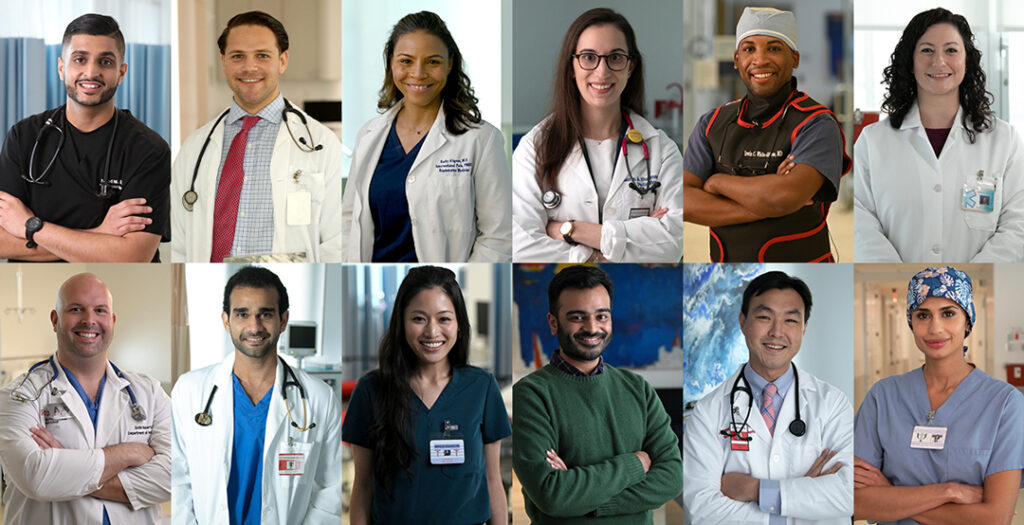Medical students who successfully demonstrate academic proficiency during their first two years of medical school are ready to move on to clinical rotations at St. George’s University School of Medicine.
There are many elements that go into clinical training: we have provided tips and resources to help students prepare. This resource gives insight on what to expect while you complete clinical training during your third and fourth year of medical school.
Why clinical rotations are important during medical school
During the clinical portion of medical school training, students receive the hands-on experience they need to ultimately be successful in patient care. SGU’s med students can complete their training at one of more than 75 hospital sites and clinical centers in the United States, United Kingdom, or Canada.
“This is an exciting time for students. They have finally completed their prerequisite training and are able to put on their white coats and venture into the hospital wards,” says Dr. Robert Grant, senior associate dean of clinical studies at St. George’s University School of Medicine.
Students are encouraged to use the time during clinical rotations to continue building their skills and confidence to practice medicine. In addition, SGU School of Medicine encourages students to experience the most they can while enjoying the challenge of clinical rotations—it will make them a better doctor.
“Importantly, each of the core rotations and the elective rotations should be seen as an opportunity to broaden your professional relationships with faculty, colleagues, and peers because medicine today is practiced in a team environment,” Dr. Grant adds.
Tips to succeed in SGU’s clinical rotations
A few additional tips that will help students succeed during their clinical experience for medical school, according to Dr. Grant:
- Treat your colleagues, peers, preceptors, and patients as you would want a member of your family to be treated
- Show up on time
- Dress professionally
“This is a different kind of learning now,” says Dr. Grant. “You’re going to need a different set of competencies than what helped you through the basic science years. Now you will have to make use of your skill sets in humanism, interpersonal relations, and, in terms of team building, being able to assess and treat a patient together with other doctors and hospital personnel.”
SGU’s School of Medicine provides resources to help clinical students succeed and stay on track toward graduation and the all-important Residency Match. This will ultimately prepare students to address the global healthcare needs of today.
“Healthcare is increasingly complex these days, but I can tell you there is nothing more satisfying than to finally be able to make a difference in the care in the life of your fellow human beings,” Dr. Grant said.
We have assembled some articles that can help you gain a better understanding of what is expected of you during clinical rotations, how to prepare for your clinical experience, and how to be successful during SGU clinical rotations.
- What Are Clinical Rotations in Medical School?
- Doctors Share 7 Insider Secrets to Thriving During Clinical Rotations
- Understanding Clerkship for International Medical Students
- What Is a Teaching Hospital?
- A Look at Medical School Curriculum by Year
- Answering 8 Common Questions About SGU Clinical Rotations
USMLE 2
MSPE
Residency: What to expect
Completing medical school and earning your MD is a huge accomplishment that any student should be proud of. But the training does not stop there for physicians. Obtaining a residency position is the final piece of the student-to-physician puzzle.
Curious to learn more about residency? Read our article, “How to Land the Medical Residency You Want: 7 Criteria You’ll Be Evaluated On.”
*This article was originally published in January 2022. It has since been updated to include information relevant to 2024.

